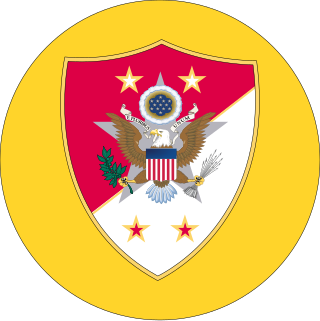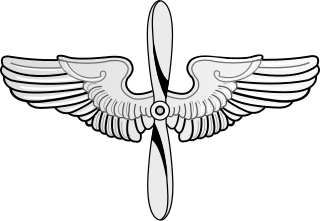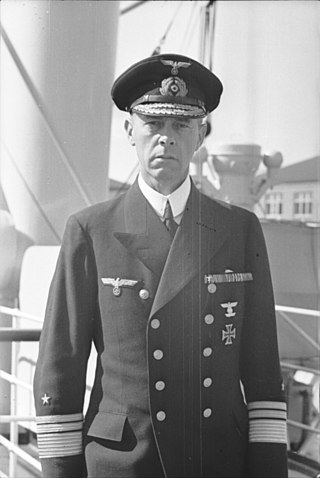
The United States Military Academy (USMA) is a United States service academy in West Point, New York. It was originally established as a fort during the American Revolutionary War, as it sits on strategic high ground overlooking the Hudson River 50 miles (80 km) north of New York City. It is the oldest of the five American service academies and educates cadets for commissioning into the United States Army.

The United States Air Force Academy (USAFA) is a United States service academy in El Paso County, Colorado, immediately north of Colorado Springs. It educates cadets for service in the officer corps of the United States Air Force and United States Space Force. It is the youngest of the five service academies, having graduated its first class 65 years ago in 1959, but is the third in seniority. Graduates of the academy's four-year program receive a Bachelor of Science degree and are commissioned as second lieutenants in the U.S. Air Force or U.S. Space Force. The academy is also one of the largest tourist attractions in Colorado, attracting approximately a million visitors each year.

Epaulette is a type of ornamental shoulder piece or decoration used as insignia of rank by armed forces and other organizations. Flexible metal epaulettes are referred to as shoulder scales.

The Virginia Military Institute (VMI) is a public senior military college in Lexington, Virginia. It was founded in 1839 as America's first state military college and is the oldest public senior military college in the United States. In keeping with its founding principles and unlike any other senior military college in the United States, VMI enrolls cadets only and awards bachelor's degrees exclusively. The institute grants degrees in 14 disciplines in engineering, science, and the liberal arts.

The sergeant major of the Army (SMA) is a unique non-commissioned rank and position of office in the United States Army. The holder of this rank and position is the most senior enlisted soldier in the Army, unless an enlisted soldier is serving as the senior enlisted advisor to the chairman. The SMA is appointed to serve as a spokesman to address the issues of enlisted soldiers to all officers, from warrant officers and lieutenants to the Army's highest positions. As such, they are the senior enlisted advisor to the chief of staff of the Army. The exact duties vary depending on the chief of staff, though much of the SMA's time is spent traveling throughout the Army, observing training and talking with soldiers and their families.

A cap badge, also known as head badge or hat badge, is a badge worn on uniform headgear and distinguishes the wearer's nationality and/or organisation. The wearing of cap badges is a convention commonly found among military and police forces, as well as uniformed civilian groups such as the Boy Scouts, civil defence organisations, ambulance services, customs services, fire services etc.
Officer Cadet is a rank held by military cadets during their training to become commissioned officers. In the United Kingdom, the rank is also used by members of University Royal Naval Units, University Officer Training Corps and University Air Squadron; however, these are not trainee officers with many not choosing a career in the armed forces.

The Citadel Military College of South Carolina is a public senior military college in Charleston, South Carolina, United States. Established in 1842, it is the third oldest of the six senior military colleges in the United States. The Citadel was initially established as two schools to educate young men from around the state, while simultaneously protecting the South Carolina State Arsenals in both Columbia and Charleston.

Valley Forge Military Academy and College (VFMAC) is a private boarding school and military junior college in Wayne, Pennsylvania. It follows in the traditional military school format with army traditions. Though military in tradition and form, the high school portion of VFMAC, Valley Forge Military Academy, is a college-preparatory boarding institution specializing in student leadership. VFMAC's administration is composed almost entirely of current or retired military and the board of trustees is almost entirely alumni. Some graduates pursue careers in the armed services and VFMAC has graduated one Rhodes Scholarship recipient.

The black beret is a colour of beret, a type of headgear. It is commonly worn by paramilitaries and militaries around the world, particularly armored forces such as the British Army's Royal Tank Regiment (RTR), the Royal Canadian Armoured Corps (RCAC), and Royal Australian Armoured Corps (RAAC) and the Indian Army Armoured Corps and Indian Border Security Force. Notable non-armored military units to wear the black beret include the non-military police and non-special forces elements of the Irish Defence Forces, MOD Guard Service, Russian Naval Infantry and Russian OMON units, the United States Air Force (USAF) Tactical Air Control Party (TACP), Philippine National Police-Special Action Force (PNP-SAF) members, and the Royal Canadian Navy. It was also worn by the United Kingdom's Royal Observer Corps (ROC) with their Royal Air Force (RAF) uniform, Metropolitan Manila Development Authority (MMDA).
Massachusetts Institute of Technology's class ring, often called the Brass Rat, is a commemorative ring for the graduating class of undergraduate students at MIT. The ring is redesigned each year by a committee of MIT students. The class ring has three main sections: the bezel, containing MIT's mascot, the beaver; the MIT seal ; and the class year. The side surfaces of the current ring design show the Boston and Cambridge skylines. An MIT campus map and the student's name are engraved on the inner surface. On earlier versions, the Great Dome and Building 10 facade were featured on each shank, with "MIT" under it on one side and the class year on the other. The version of the MIT class ring for graduate students is known as the "Grad Rat".
The ranks and insignia of the Confederate States were a rank insignia system devised for the Military of the Confederate States of America during the American Civil War.

In the United States Army, soldiers may wear insignia to denote membership in a particular area of military specialism and series of functional areas. Army branch insignia is similar to the line officer and staff corps officer devices of the U.S. Navy as well as to the Navy enlisted rating badges. The Medical, Nurse, Dental, Veterinary, Medical Service, Medical Specialist, Chaplains, and Judge Advocate General's Corps are considered "special branches", while the others are "basic branches".

The Prop and Wings is a military insignia used to identify various aviation-related military units. A stylized propeller and wings insignia was adopted in Germany prior to the outbreak of the First World War for its Fliegertruppen des deutschen Kaiserreiches, redesignated as the Luftstreitkräfte in October 1916. The insignia was utilized by the German Air Service both as part of its officers' epaulet rank insignia and as an insignia for enlisted personal to identify their air unit of assignment. It was also seen as the central image on a badge worn by a small number of designated officers and enlisted personnel at the time of German mobilization in 1914.

The United States Navy's Officer Candidate School provides initial training for officers of the line and select operational staff corps communities in the United States Navy. Along with United States Naval Academy (USNA) and Naval Reserve Officer Training Corps (NROTC), OCS is one of three principal sources of newly commissioned naval officers.

The cadets of the United States Military Academy first began the practice of wearing class rings in 1835. The United States Military Academy class ring has traditionally been worn on the left hand, but most recent graduates choose to wear it on their right hand, which is likely in response to the dilemma posed by wearing both a West Point ring and a wedding ring on the same finger.
The uniforms of the United States Army distinguish soldiers from other service members. U.S. Army uniform designs have historically been influenced by British and French military traditions, as well as contemporary U.S. civilian fashion trends. The two primary uniforms of the modern U.S. Army are the Army Combat Uniform, used in operational environments, and the Army Green Service Uniform, worn during everyday professional wear and during formal and ceremonial occasions that do not warrant the wear of the more formal blue service uniform.

The Kriegsmarine was the navy of Nazi Germany prior to and during World War II. Kriegsmarine uniform design followed that of the preexisting Reichsmarine, itself based on that of the First World War Kaiserliche Marine. Kriegsmarine styles of uniform and insignia had many features in common with those of other European navies, all derived from the British Royal Navy of the 19th century, such as officers' frock coats, sleeve braid, and the "sailor suit" uniform for enlisted personnel and petty officers.

The academic regalia of Stanford University describes the robes, gowns, and hoods which are prescribed by the university for its graduates. Stanford University was founded in 1891 and academic dress has been a part of academic life at the school since at least 1899. As in most American universities, the academic dress found at Stanford is derived from that of the universities of Oxford and Cambridge, which was a development of academic and clerical dress common throughout the medieval universities of Europe. Today, also in common with most American universities, academic regalia is commonly seen only at graduation ceremonies. For most of its academic dress, Stanford follows the Intercollegiate Code of Academic Costume which was devised in 1895 and sets out a detailed uniform scheme of academic regalia. Stanford does make use of a distinct robe for its PhD graduates which is unique among American institutions of higher education in being based specifically on the doctoral robes of the University of Cambridge.

The uniforms of the United States Space Force are the standardized military uniforms worn by U.S. Space Force personnel, known as guardians.

















